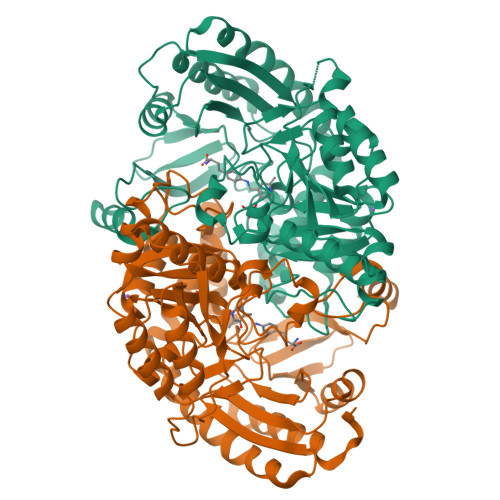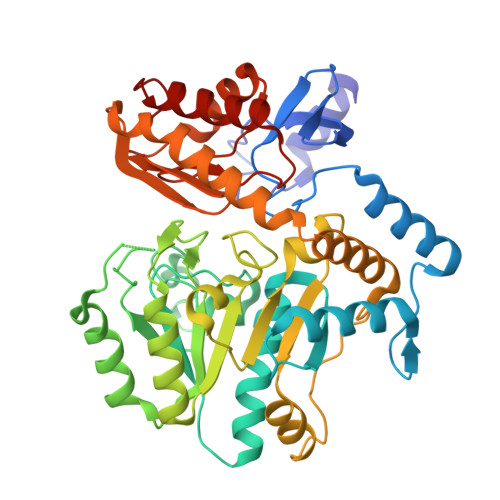Structural basis for the inhibition of the biosynthesis of biotin by the antibiotic amiclenomycin
Sandmark, J., Mann, S., Marquet, A., Schneider, G.(2002) J Biological Chem 277: 43352-43358
- PubMed: 12218056
- DOI: https://doi.org/10.1074/jbc.M207239200
- Primary Citation of Related Structures:
1MLY, 1MLZ - PubMed Abstract:
The antibiotic amiclenomycin blocks the biosynthesis of biotin by inhibiting the pyridoxal-phosphate-dependent enzyme diaminopelargonic acid synthase. Inactivation of the enzyme is stereoselective, i.e. the cis isomer of amiclenomycin is a potent inhibitor, whereas the trans isomer is much less reactive. The crystal structure of the complex of the holoenzyme and amiclenomycin at 1.8 A resolution reveals that the internal aldimine linkage between the cofactor and the side chain of the catalytic residue Lys-274 is broken. Instead, a covalent bond is formed between the 4-amino nitrogen of amiclenomycin and the C4' carbon atom of pyridoxal-phosphate. The electron density for the bound inhibitor suggests that aromatization of the cyclohexadiene ring has occurred upon formation of the covalent adduct. This process could be initiated by proton abstraction at the C4 carbon atom of the cyclohexadiene ring, possibly by the proximal side chain of Lys-274, leading to the tautomer Schiff base followed by the removal of the second allylic hydrogen. The carboxyl tail of the amiclenomycin moiety forms a salt link to the conserved residue Arg-391 in the substrate-binding site. Modeling suggests steric hindrance at the active site as the determinant of the weak inhibiting potency of the trans isomer.
Organizational Affiliation:
Department of Medical Biochemistry and Biophysics, Karolinska Institutet, S-171 77 Stockholm, Sweden.



















